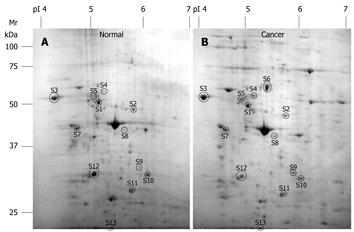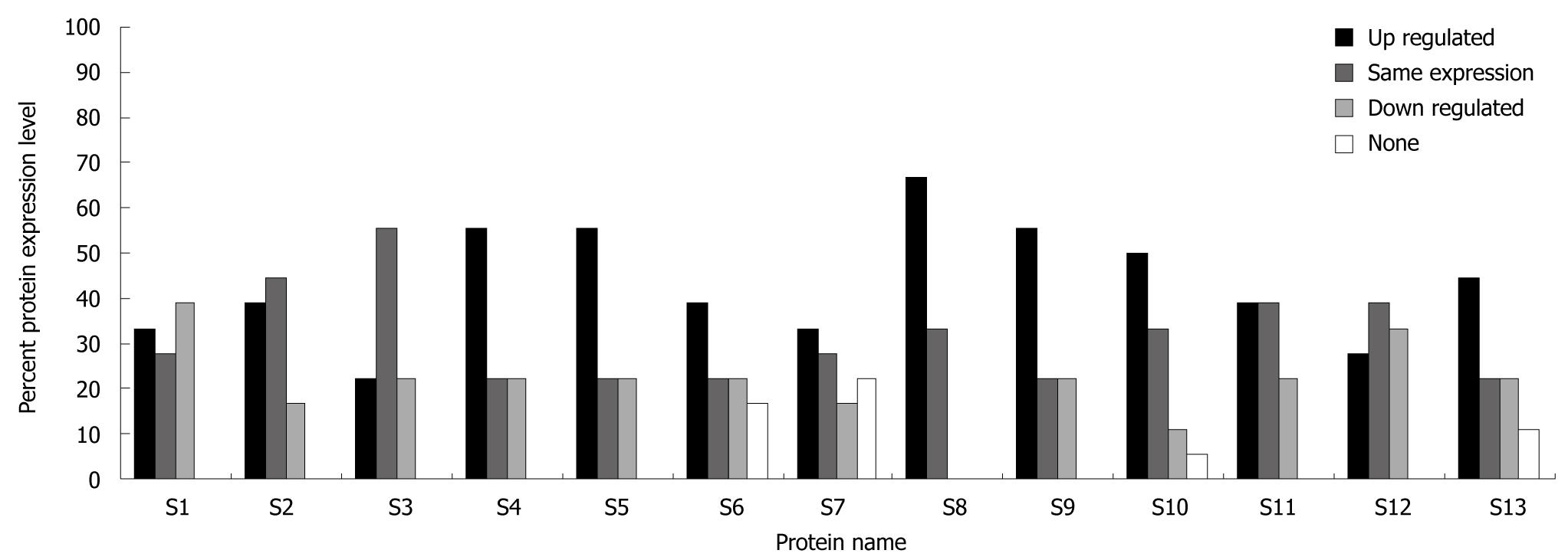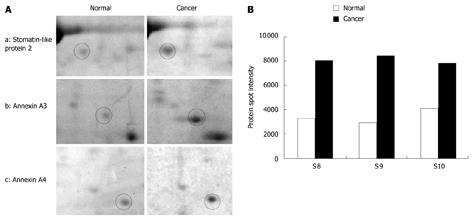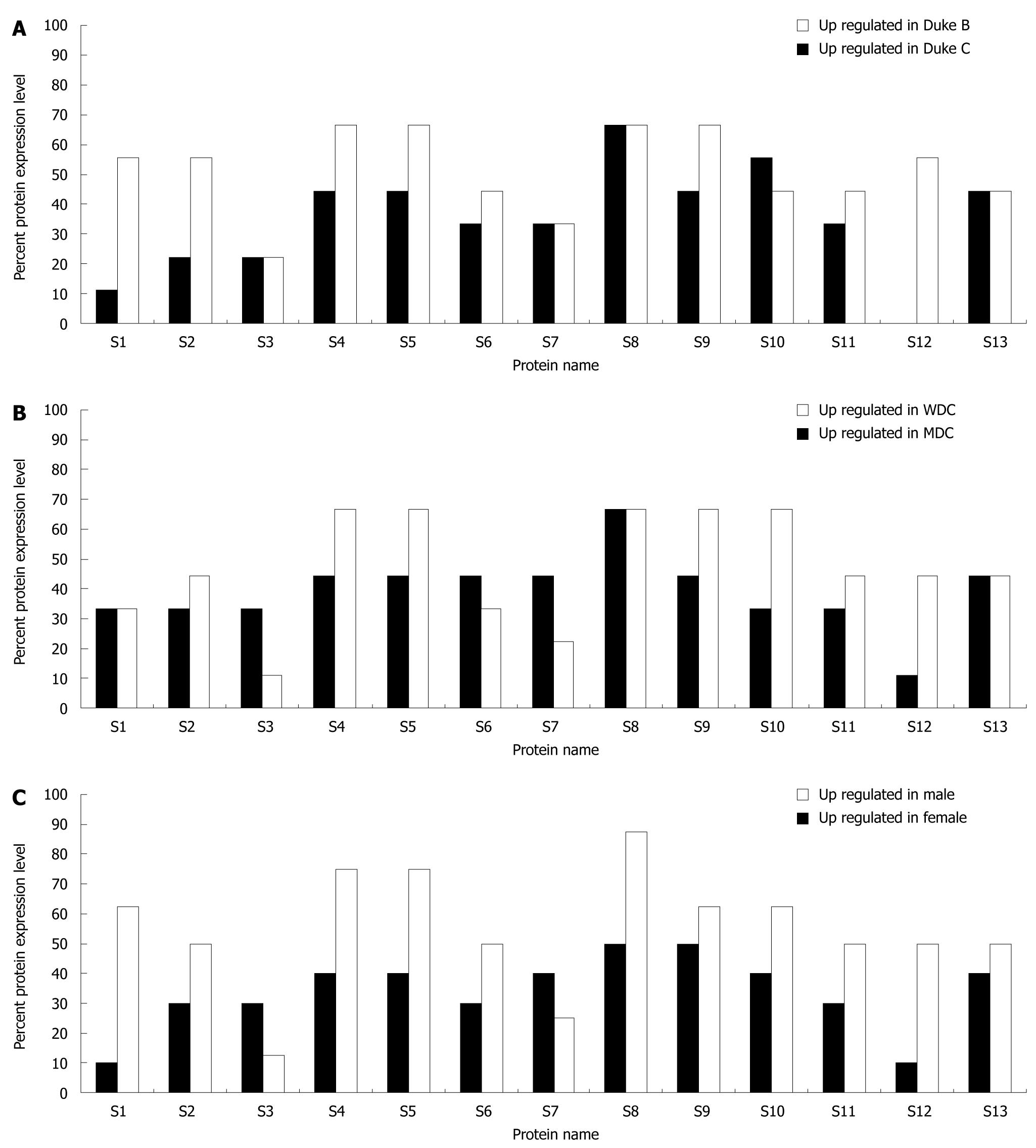Copyright
©2010 Baishideng.
World J Gastroenterol. Jun 14, 2010; 16(22): 2754-2763
Published online Jun 14, 2010. doi: 10.3748/wjg.v16.i22.2754
Published online Jun 14, 2010. doi: 10.3748/wjg.v16.i22.2754
Figure 1 Protein expression profiles of normal mucosa (A) and CRC tissues (B).
S1: F1-ATPase β subunit; S2: Ubiquinol-cytochrome C reductase; S3: Calreticulin; S4: Tubulin α-1 chain; S5: Tubulin β-2 chain; S6: Chaperonin GroEL; S7: Heat shock 70 kDa protein 5; S8: Stomatin-like protein 2; S9: Annexin A3; S10: Annexin A4; S11: Prohibitin; S12: Annexin V; S13: ATP synthase D chain.
Figure 2 Distribution of proteins in cancerous tissues vs normal tissues in all 18 patients.
An up-regulated protein is a protein with a higher expression level in cancerous tissues than in normal tissues, and vice versa for down-regulated proteins. Same expression is when the expression levels are the same between cancerous and normal tissues. None expression is when the protein was not found in either cancerous or normal tissues.
Figure 3 Protein spot analysis (A) and quantification of spot intensity (B) of (a) stomatin-like protein 2 (S8), (b) annexin A3 (S9) and (c) annexin A4 (S10) from normal and colorectal cancerous tissues in the same patient.
Figure 4 LC/MS/MS analysis of protein.
A: Full scan MS spectra of 531.7 m/z peptide; B: MS/MS spectra of 531.7 m/z peptide ions of stomatin-like protein 2.
Figure 5 Western blotting for stomatin-like protein 2.
Lane 1 and 2 are proteins extracted from normal and cancerous tissues, respectively, from the same patient.
Figure 6 Distribution of proteins in cancerous tissues vs normal tissues in all patients in relation to cancer stage (A), grade (B) and gender (C).
An up-regulated protein is a protein with a higher expression level in cancerous tissues than in normal tissues, and vice versa for down-regulated proteins.
- Citation: Yeoh LC, Loh CK, Gooi BH, Singh M, Gam LH. Hydrophobic protein in colorectal cancer in relation to tumor stages and grades. World J Gastroenterol 2010; 16(22): 2754-2763
- URL: https://www.wjgnet.com/1007-9327/full/v16/i22/2754.htm
- DOI: https://dx.doi.org/10.3748/wjg.v16.i22.2754














